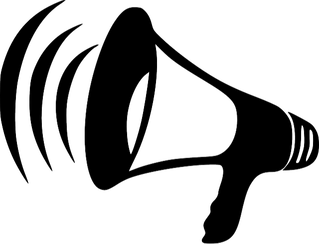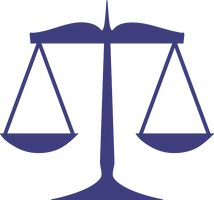How Did I Get Here? One of my favorite things about teaching is the opportunity to create activities. I like learning new things myself and, as I learn about a new topic, I create activities for my students to learn about it also. But, in the process of learning new things I often come upon other things I want to know about, so I end up going down a different “rabbit hole”. Or, in the case of the intersection of science, business, and law, perhaps the better term is mouse hole.  Let me explain. Because of a project I am currently involved in, I became interested in the history of food labeling. That lead me to write my November post about food supplements. In January, I followed up with a post about the labeling of certain foods based on geography. Geographic indicators are government identifiers issued to certain products that are viewed as having special qualities due to where they are made. These food products have been given economic protection much like a copyright or trademark. Food is Made of Chemicals and Copyright is For Expression of Ideas But, according to copyright law, recipes are factual and functional and, therefore, not copyrightable. They are simply listings of ingredients with directions. Should a specific variety of smoked sausage be given economic protection because it is made in Bologna, Italy? Must Roquefort Cheese only be aged in special caves in a French town? Does Budweiser Beer need to be brewed from artesian water in the Czech Republic? Scientifically, foods are simply mixtures of chemicals. If someone adds the correct nutrients, vitamins, minerals, or other requisite compounds they should be able to create the same bologna, bread, cheese, or wine in any geographic location. Right? Copyright is Interesting Besides my years of teaching science, I am a writer. If you are reading this, you may know that I create classroom materials and I’ve written books for both learners and teachers. Copyright, fair use, and work in the public domain all bear heavily on how I express myself with the stories, blogs, and instructional products I create.  It was during my travels down the intellectual property mouse hole, that I stumbled upon a very famous mouse, which led me to write this blog. This is only tangentially related to science in that I arrived at this topic while researching the chemical components of cheese. Supposedly, Mice Like Cheese (But it turns out they don’t! Years ago, grains were stored in glass jars and meats were hung for aging. Cheese, on the other hand, was laid on a shelf. That made it an easy target for rodents like mice. Mice ate cheese not because of their great love for it, but because it was convenient. The mice love cheese idea was simply popularized by the cartoon mice in Cinderella and Tom and Jerry.) But I digress. Famous Mouse  The famous mouse who is the subject of this post is Mickey Mouse. Mickey Mouse is a cartoon character created in 1928 by Walter Disney, who died in 1966. Disney Company has a copyright on the original version of Mickey Mouse and all those that followed.  When Mickey was created, copyright law allowed a maximum of 56 years of protection. When Mickey got close to falling into the public domain, Disney lobbied for copyright changes and the Copyright Act of 1976 was ultimately signed by Congress. Under that Act, copyright protection was extended to 75 years. That extended Mickey’s copyright through to 2003. As 2003 approached, Disney’s lobbying resulted in the Copyright Term Extension Act of 1998, which extended copyright protection to 95 years. Under the current law, the earliest version of Mickey Mouse is set to enter the public domain in 2024. Copyright Was Originally Intended to be Limited The first copyright act in 1790 allowed a 14-year monopoly on original work, a far cry from the 95 years of today. The term of most patents is 20 years from the filing date of the application. These monopolies are intended to promote the progress of useful arts and science by protecting the exclusive right of authors and inventors to benefit from their works of authorship for a limited period.  The reason copyright is limited by time is that creativity does not happen in a vacuum. The Disney film The Lion King is a kid-friendly version of Hamlet. Arthur Laurents’ West Side Story is Romeo & Juliet with a slightly less tragic ending. And Shakespeare, author of both Hamlet and Romeo & Juliet, was influenced by Icelandic sagas for the writing of Hamlet and earlier poems for the plot of Romeo and Juliet. When a new work or invention is produced by an individual they may exclusively profit from the copy, distribution, or lease of their work for a limited time. After that, creative works, as well as inventions enter the public domain. The term “public domain” refers to creative materials that are not protected by intellectual property laws such as copyright, trademark, or patent laws. The public owns these works, not an individual author or artist. Anyone can use a public domain work without obtaining permission. Plagiarism is a No-No As any high school student tasked with writing a report knows, copying other’s work is plagiarism and an ethical no-no. If source material in the public domain is available, it can be used without attribution or royalty payment. English, library, business, law, art, or history teachers may find the issues relating to Disney and Mickey Mouse enriching to their classroom curriculums. Plus, here is an activity that teaches about Fair Use, the legal doctrine that promotes freedom of expression by permitting the unlicensed use of copyright-protected works in certain circumstances. Mickey Mouse is Also Disney’s Trademark  In 2024, the original design of Mickey Mouse may move into the public domain. In each subsequent year more recent versions of Mickey would also become open use. Modern Mickey looks very different from than he did in his first film, Steamboat Willie. He doesn’t even wear white gloves until 1929. Once in the public domain, new creators of Mickey merchandise would not have to get approval or authorization from Disney if their depictions reflected whichever version of the character is in the public domain. That is, if he enters the public domain.  Disney also owns trademark rights to Mickey Mouse, which don’t expire in the way that copyright does. Trademark law protects words, phrases, and symbols used to identify the source of the products or services. Mickey Mouse is used heavily by Disney to identify the fact that Disney is the source of the famous mouse. It would be difficult for anyone to sell a product emblazoned with Mickey since that would be a deceptive use of the Disney trademark. Disney has trademarked Mickey Mouse live-action and animated television shows, cartoon strips, comic books, theme parks, and computer games, as well as his visual appearance for animated and live-action motion picture films. Disney is unlikely to stop protecting Mickey Mouse from entering the public domain since he is one of their most valuable assets. What About Mickey’s Friends?  Mickey Mouse is a ubiquitous representative of Disney, and, as such, an obvious trademark. But Disney may not be successful in preventing their less recognizable characters from entering the public domain. Winnie the Pooh may enter the public domain in 2022. Disney has trademarked the bear but is not the original creator. So, they may have less standing on protecting the use of Pooh than they have with Mickey. Minnie Mouse is up for public domain in 2024. Pluto, Goofy, and Donald Duck will be up for public domain soon after Mickey and Minnie. How Long Should Copyright Last?  As with all lawmaking, copyright policy is the result of a struggle of between competing interests. The more powerful interests have historically been copyright advocates like the motion picture and recording industry, as well as the authors guild. Those associations have ties to the politicians steering law and regulation around copyright  But the rise of the Internet has changed the political landscape on copyright issues. When the Stop Online Piracy Act (SOPA) was introduced in 2011, major websites like Wikipedia went dark to protest the potential negative effects of the legislation. Millions of people protested online and via social media. The public didn’t let it happen. In recent years new and better organized communities of users have been pushing for a free and open internet. They are making their voices heard in the political sphere.  The term of copyright being the life of the author plus more than 50 years is excessive. But there are communities of people who are working for a fairer copyright. Everyone should have access to a robust shared public domain via fast and reliable internet. It is in the public interest to create a balanced copyright that rewards creators, and upholds the rights of users to access, reuse, and further contribute to our knowledge and creative commons.  Creative Commons licenses give everyone a standardized way to grant the public permission to use creative work under copyright law. There are six different CC licenses which vary from least restrictive, where users must give credit to creators, but they have unlimited use of the work, to most restrictive, where they must give credit to creators, but they may not use adapt the work nor use it commercially. Perhaps one day soon, with a robust public domain, a new creator will be able to credit Disney but write a story featuring Donald Duck.
0 Comments
Leave a Reply. |
AuthorGertrude Katz has spent over 30 years teaching K-12 public school students all major subjects. She has taught biology and education at the college level. The majority of her career has been spent instructing biology at the secondary level. Categories
All
|
 RSS Feed
RSS Feed